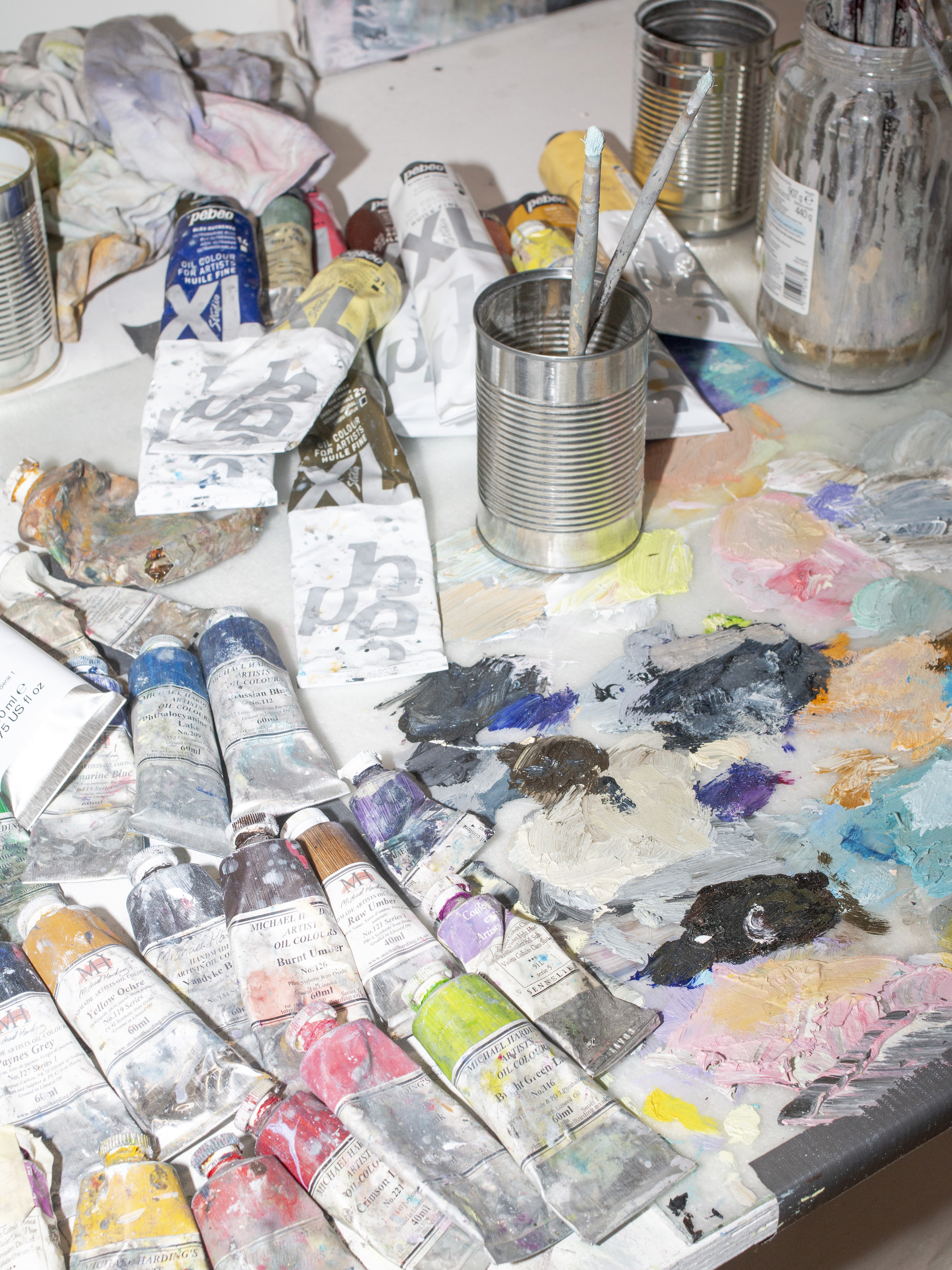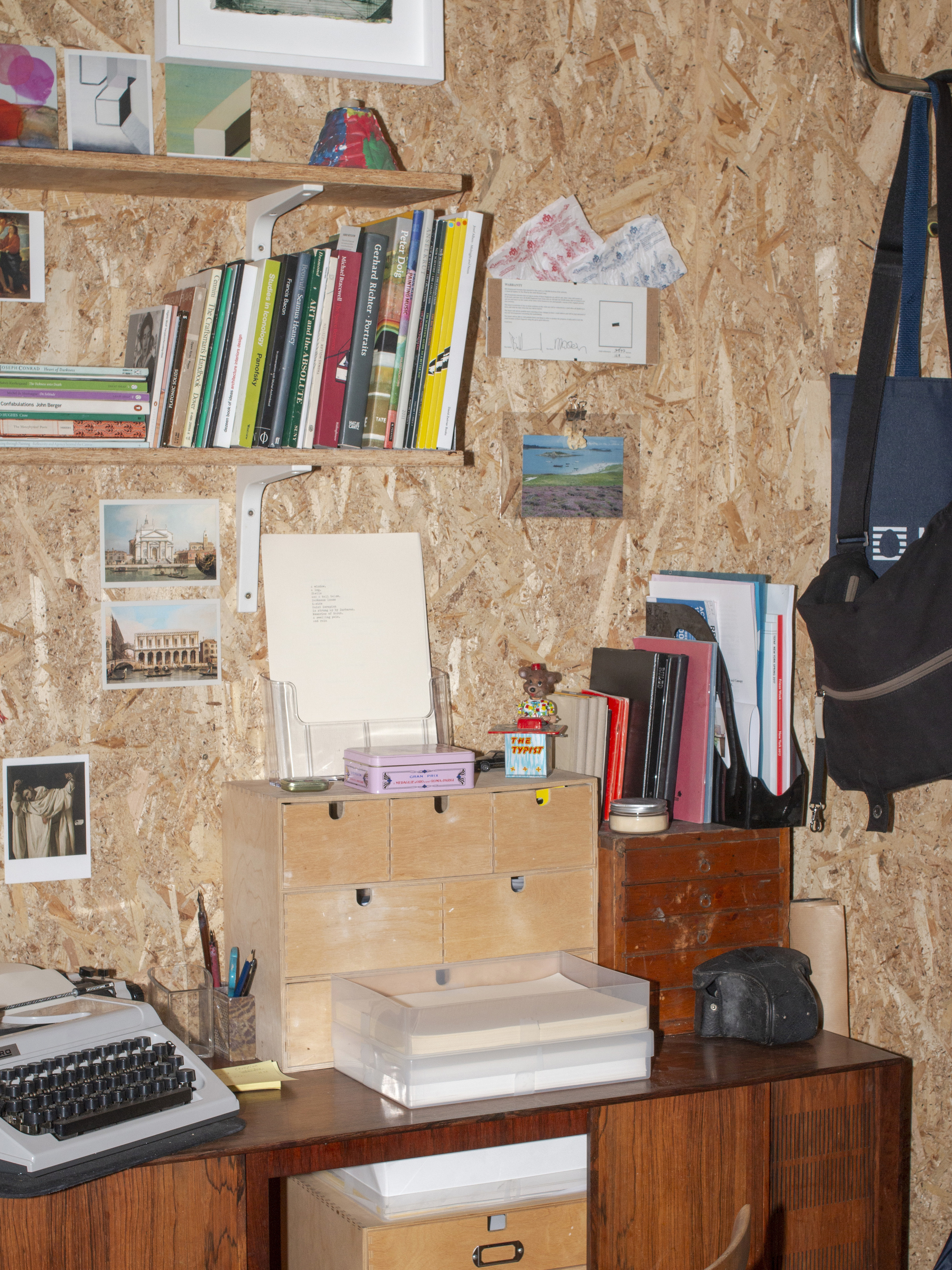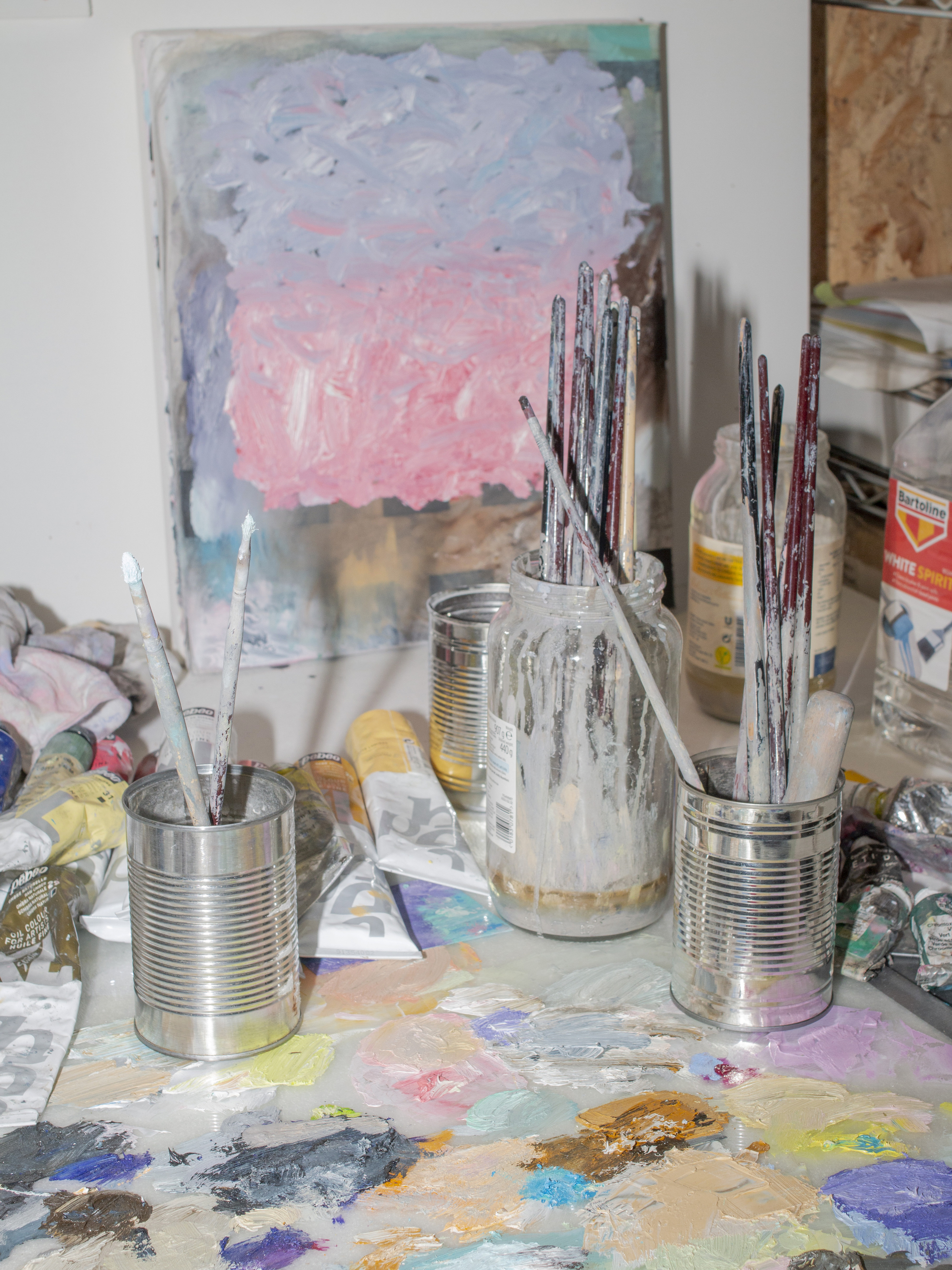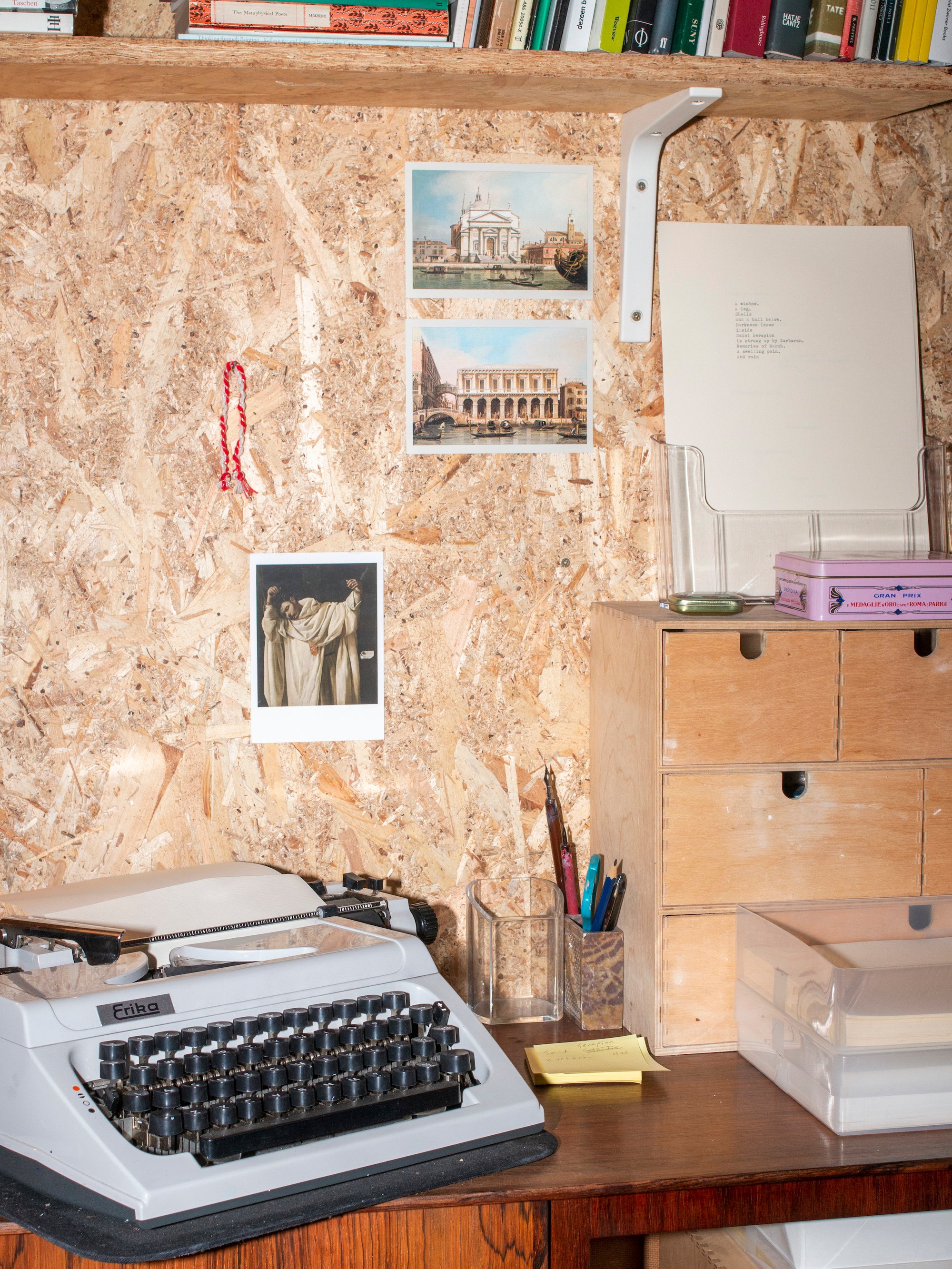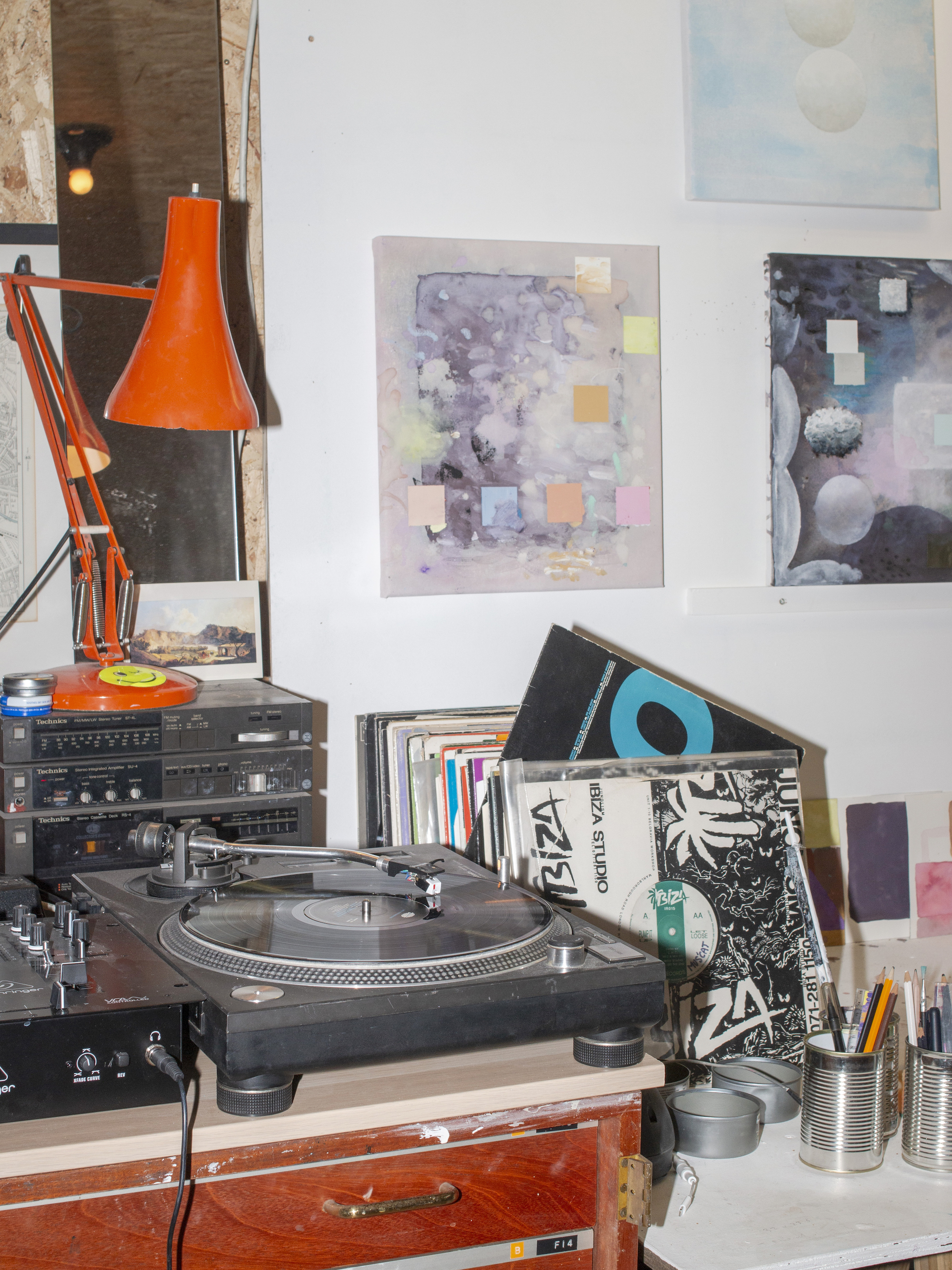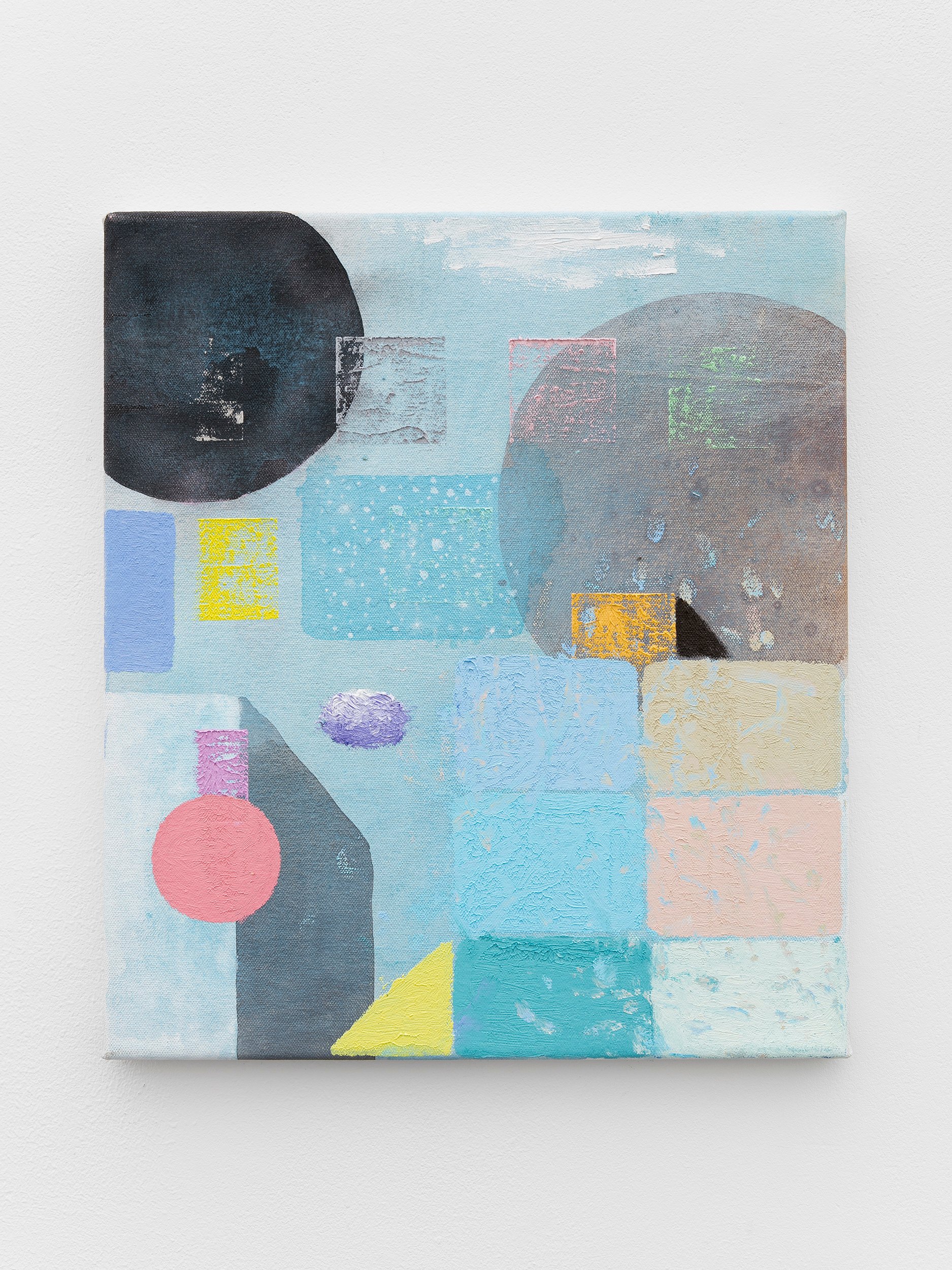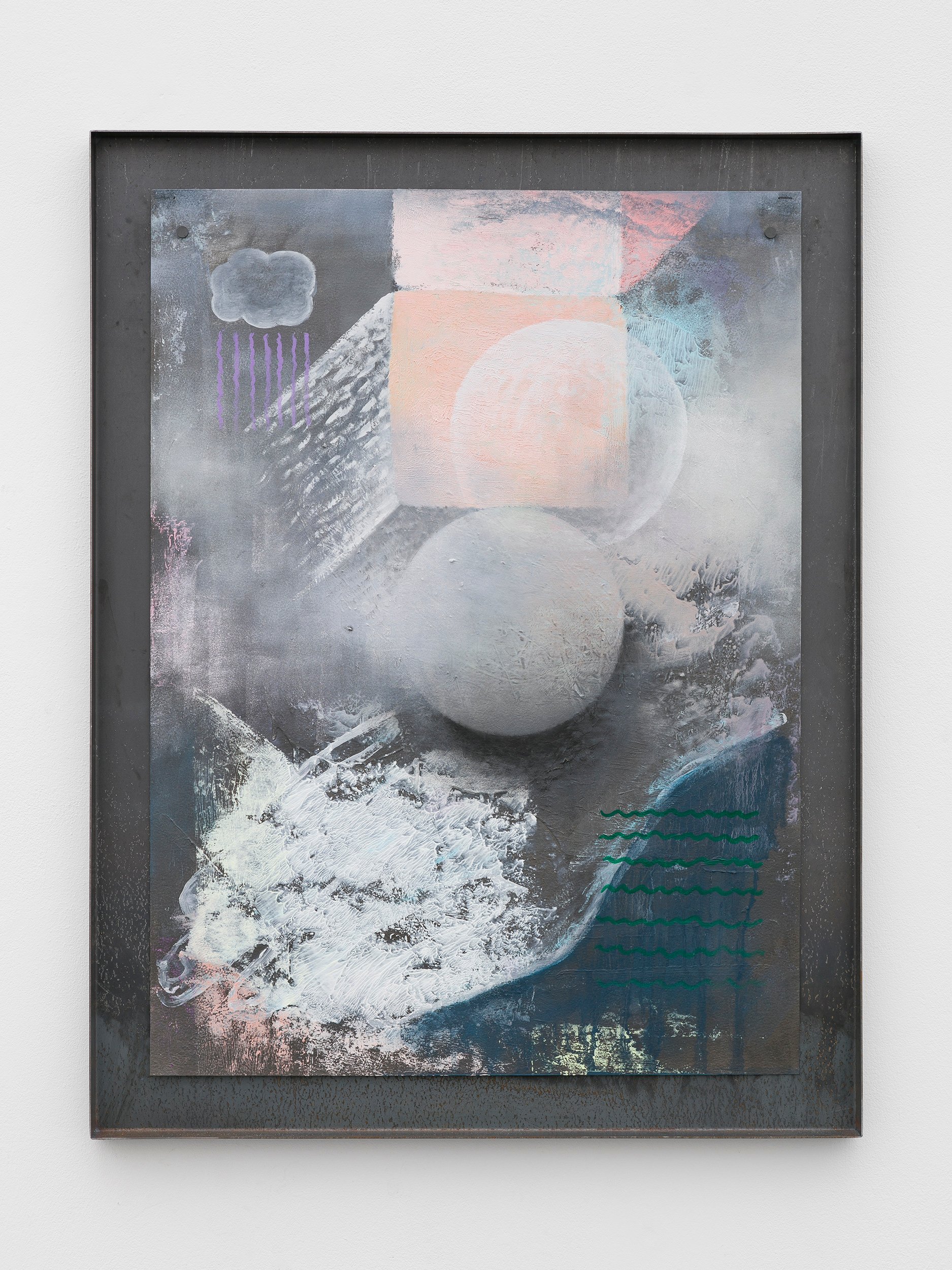William Stein
Can you describe your work in three words?
Birth / Life / Death
How did you become an artist? What drew you to painting more specifically?
I grew up in a creative household. My mother is an artist and has always had a studio at home so it was normal to be around a studio and to see art making as a daily activity. As far back as I can remember, I was drawing and painting. I didn’t choose to be an artist; I was never really going to ‘be’ anything else. In terms of painting, having worked over the years with installation, sound, animation, writing, and object making, I do struggle with defining myself as a painter, or rather I would not want to be limited to this definition. However, the physical practice of making paintings is of great importance to me. The stuff, the material, the matter, this is what really excites me and it is within the manipulation of the physical that I am able to move into the psychological and metaphysical… And so painting has always remained at the core of my practice.
Are there any ongoing themes within your work?
The work articulates themes of anxiety, joy, memory, loss, love and fear.
You use a very distinctive palette in your work. Can you tell us more about where these colours came from?
I have absorbed my palette since childhood. The colours I turn to in a particular work might be the most direct link to an experience, memory or emotion I am exploring. I have never really thought about where the colours come from, but as you ask, I’d say: flesh tones (alive and dead) / early Renaissance work, particularly fresco / Hubba Bubba (strawberry flavour) / graffiti (aged) / Angel Delight (all flavours) / water (fresh and saline) / skateboard wheels / Neapolitan ice-cream (enough said) / wind / the sky (a million variations) / old carpets / light / air / Bonbons (all flavours) / grass and other vegetation (fresh and dried) / earth (various) / dust (various) / the ‘80s (and ‘90s) / corners (various) / old walls (various) / crumbs (various) / memories (various)
Alongside your paintings, you’ve been producing many works on paper. What do you find appealing in this mode of art-making?
There is a freedom to working on paper, which can perhaps be lost when working on canvas. The idea of the sketch is more at the forefront of my mind when working with paper, which allows the potential for a very direct and dynamic mode of making. There is of course nothing better than gently dragging a loaded brush of liquid gouache across a pristine piece of paper, but also as paper has no flex and give, unlike a stretched canvas. I can approach the work surface with more force and violence if necessary, without the risk of damage.
More recently, you’ve also started to include text in your works on paper, using a typewriter. Can you tell us more about this relationship between painting and poetry?
I have always written poetry alongside my painting practice. The words are an attempt to conjure and realise feelings or memories that might have been nudging my consciousness for some time, yet are sitting just out of reach, and I’ve been unable to hook them with drawing or painting. The writing, particularly the unequivocal approach that the typewriter allows, helps me focus in, clarify, and illuminate. The words can often set the mood for the day/week in the studio, and so the writing and painting become closely interlinked. It therefore felt like an obvious step to bring the words directly onto a page together with painting and drawing.
Would you say there is something quite autobiographical within your work?
Absolutely, yes. Every move I make within the work is born of my personal experience. Every composition, colour play, structural relationship, each opposition and contraction, are all physical realisations of my psychology and history. For a long time I denied this to myself, making suggestions that the work was purely formal, separate from me; that I was merely a mute enabler. This was of course nonsense, a statement born of fear.
Who are the artists that have inspired you most?
Aphex Twin / early Renaissance masters – Fra Angelico, Lippi, Massacio / Actress / the CoBrA group / LFO / Edvard Munch / Unique 3 / Philip Guston / Giorgio Morandi / The Cure / Keith Hudson / Paul Klee / Kate Bush
What interested you about joining Canopy Collections?
There has been such import placed on the white box gallery context in recent years, sometimes to the point of mania, that it has been possible to forget the end point of so many artworks, the place they will live: in homes. It is exciting to see how Canopy Collections is re-writing the rules and offering a really relevant and considered way to exhibit and view artworks: in the context that they will end up.
Do you collect art from other artists? How important is it for you to live with art?
Yes I do. I have made various swaps with friends, which I love doing; and we have also collected works over the years from degree shows, artist studios, galleries and art fairs. Living with art is very important to us; the works play a massive role in setting the tone of our family life and home.
.jpg?v=0)
